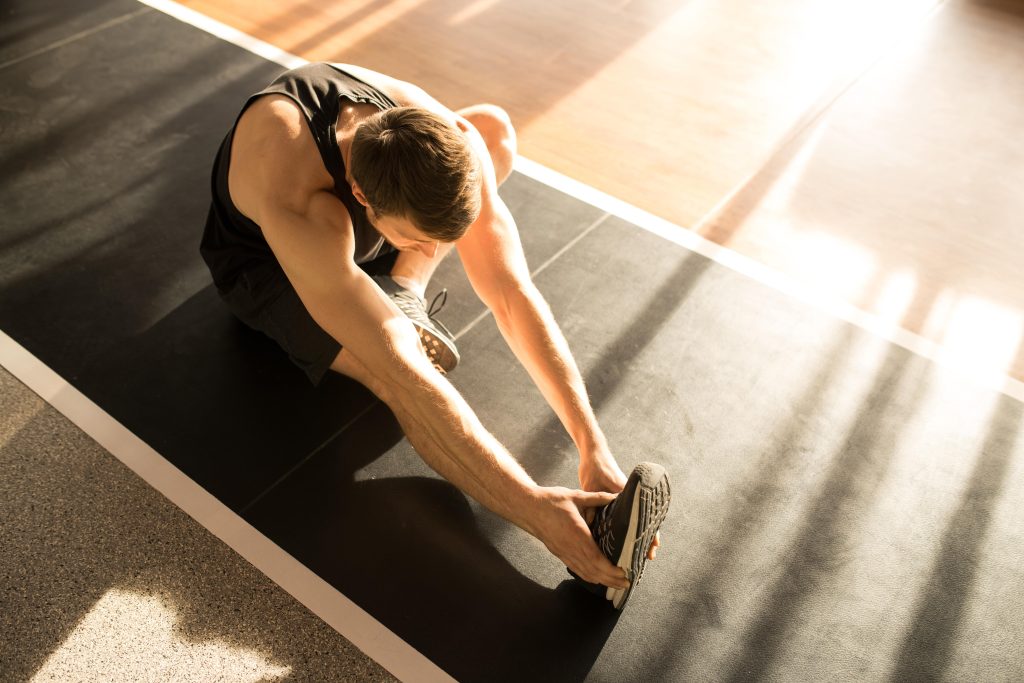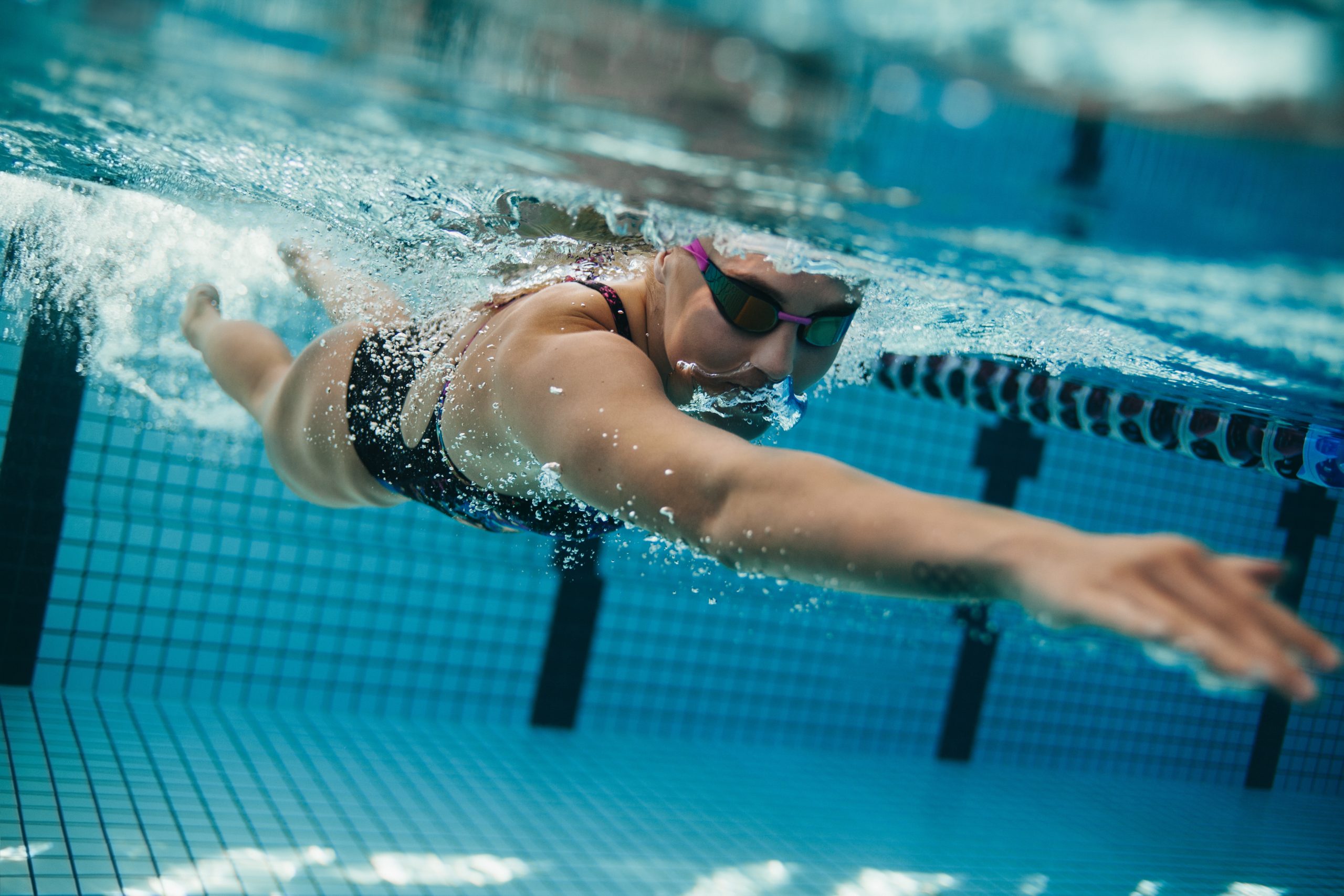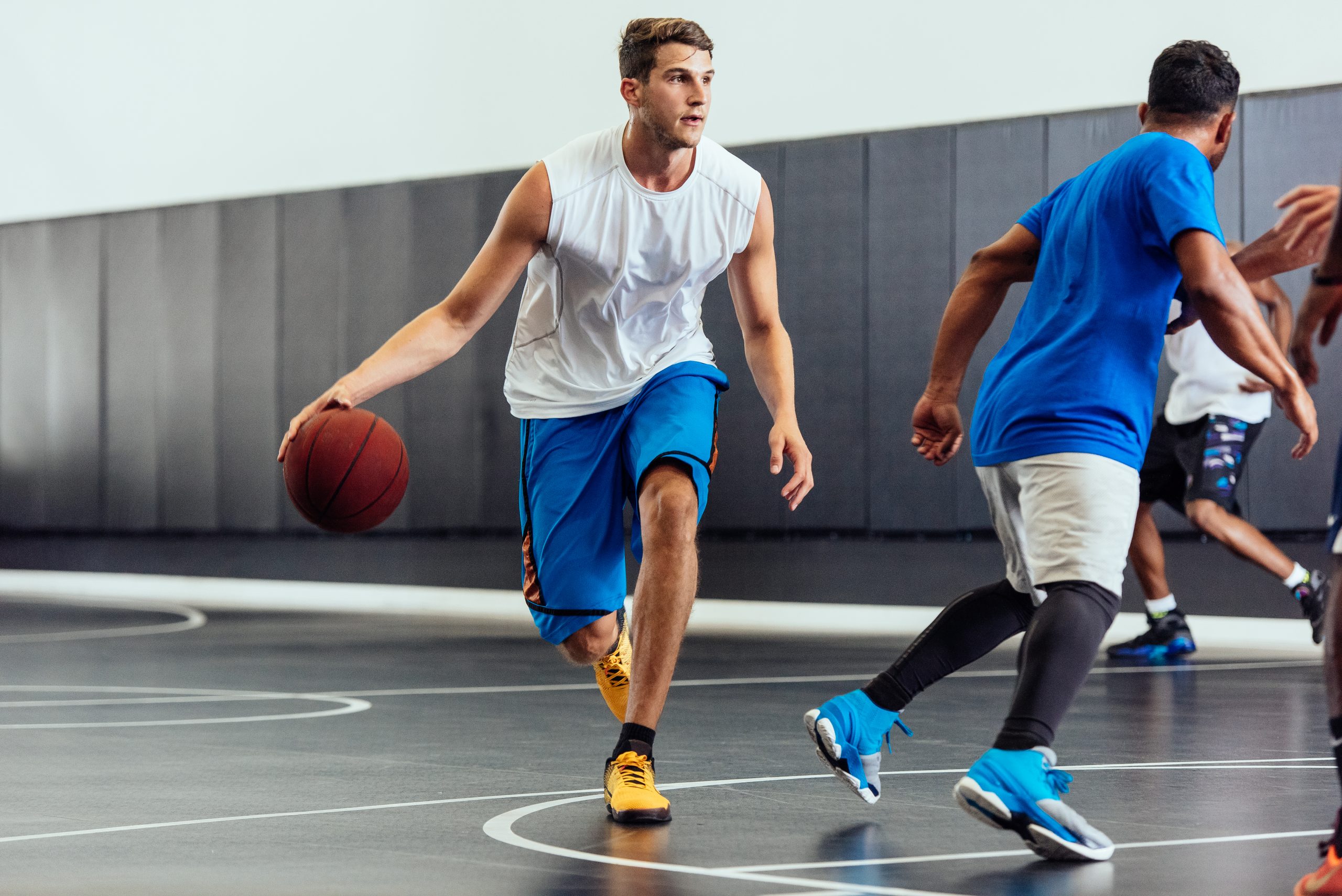Are you feeling stuck in a rut with your sports training? Have you been struggling to stay motivated and reach your goals? If so, you’re not alone. Many athletes find themselves in this situation, especially when they don’t have an effective plan to stay on track. Motivation is key when it comes to achieving success in any sport and can be the difference between success and failure. In this article, we will discuss why staying motivated in sports training is necessary, what types of motivation exist, as well as strategies that can help you increase motivation and get back on track towards your goals.
Why Staying Motivated In Sports Training Is Necessary?
Staying motivated in sports training is essential for success. When motivation levels are high, athletes can perform better and push their limits further than they think possible. Without motivation, it’s easy to become complacent and stop pushing yourself to reach your goals. It’s also important to stay motivated because it helps combat external factors that can affect performance such as injury, fatigue, or outside stressors.
Motivation also helps athletes stay focused on their goals and maintain a positive attitude throughout their career. Finally, staying motivated allows athletes to enjoy the process of training and reach new heights of success that they may not have been able to achieve without the right level of motivation.
Motivation is the key to success in sports and it’s important to stay motivated throughout your training. With the right level of motivation, athletes can push their limits, focus on their goals, and reach new heights of success. Now let’s explore some of the different types of motivation that can help you stay focused and motivated on your journey to success!
Types of Motivation
Motivation is a key factor in sports training, and there are two primary types of motivation: intrinsic and extrinsic. Intrinsic motivation comes from within the athlete, such as a passion for the sport or to prove something to oneself. Extrinsic motivation is driven by external factors such as awards or recognition. Both forms of motivation can help athletes stay focused on their goals and push themselves further than they thought possible.
Intrinsic motivation can be achieved through activities that focus on physical activity, like running or cycling, or creative endeavors such as weight training and other activities that require discipline. Additionally, having a training buddy or partner who encourages you can help keep your intrinsic motivation up throughout your training sessions.
On the other hand, extrinsic motivation often comes from external sources such as rewards or recognition for performance. Having an audience cheer you on during games can also serve as a form of extrinsic motivation that will keep you motivated over time. Elite athletes often receive monetary rewards for success which serves as an additional source of extrinsic motivation to stay at the top of their game.
No matter what type of motivation you prefer, it’s important to remember that staying motivated in sports training is essential for success! By creating a balanced training plan with multiple types of activities and incorporating both intrinsic and extrinsic motivations into your routine, you’ll be able to increase your performance while enjoying the process along the way!
Staying motivated in sports training is the key to success! With a balanced plan and incorporating both intrinsic and extrinsic motivation, you can unlock your potential and reach new levels of performance. Now that you understand the importance of motivation in sports training, read on to learn about 5 Reasons for Lacking Motivation in Sports Training.
Strategies to Increase Motivation in Sports Training
No matter what level of sporting activity you are at, motivation is key to achieving success. There are a number of strategies that can help increase motivation in sports training, from both an internal and external perspective.
One way to increase motivation is to set achievable goals that are realistic for your current abilities and situation. Achievable goals will give you something to strive for and allow you to see progress over time, which can keep you motivated. Additionally, it helps to reward yourself for small successes along the way. This could be anything from a bike ride or going out for dinner after completing a challenging workout.
Another strategy is to employ the help of sports psychologists or coaches who can provide support and guidance throughout your journey. Engaging with elite athletes or peers who have achieved similar levels of success can also be encouraging and inspiring when it comes to staying motivated.
Motivation can also come from external factors such as a balanced training plan and physical activity that combines various elements such as weight training, reaction time drills, morning workouts, and more. Having a designated training buddy or group of friends with whom to exercise can also help keep you accountable during tough times. Finally, having an attractive workout outfit or piece of equipment may make exercising more appealing!
Overall, staying motivated in sports training requires dedication and focus on long-term goals while remaining mindful of short-term external factors like nutrition, support systems, clothing choices and more. With the right combination of intrinsic motivation techniques coupled with extrinsic rewards, anyone can stay on track towards reaching their goals!
Motivation is the key ingredient to success in sports training, no matter what level you are at. With an effective combination of intrinsic and extrinsic motivation strategies, you can stay motivated and reach your goals. Now, let’s take a closer look at how to Set Realistic Goals and Objectives!
Set Realistic Goals and Objectives
Setting realistic goals and objectives is an essential part of any successful sports training program. Goals should be measurable, achievable, relevant, and timely (SMART). They should also be specific enough that you can track your progress over time. For example, if your goal is to improve your long jump distance by 10%, break it down into smaller goals such as increasing the weight you lift each week or doing drills for speed and power.
Creating a timeline for such objectives can help ensure that you stay on task and on target. Additionally, setting up milestones along the way helps keep motivation levels high as you reach each step in the process. Finally, it’s important to remember that setbacks will happen; don’t let them discourage you from reaching your goal! With patience and hard work, most objectives are achievable.
Through setting realistic goals and objectives, you can ensure that your sports training program is effective and successful. Variety is also key to a successful program – so let’s take a look at how to incorporate it into your training sessions!
Incorporate Variety into Your Training Sessions
Variety is key to a successful training program. Not only does it keep you from getting bored and losing motivation, but it also helps to ensure that all aspects of your performance are taken into account. When creating a training plan, be sure to include a variety of activities to target different physical and mental skills. This could include bike rides for endurance, weight training for strength, agility drills for reaction time, or even a game of tag to work on coordination! Additionally, incorporating different types of physical activity can help combat fatigue and prevent overuse injuries.
It’s also beneficial to switch up the order in which you perform activities in your workout routine. For example, if you usually start with running, then try starting with weights instead; this way your body won’t become accustomed to the same type of exercise each day. Taking time off between workouts can also help keep motivation levels high – so don’t forget that rest days are part of the plan too!
Finally, having a training buddy or partner can help make sessions more enjoyable and improve adherence rates. Working out with someone who has similar goals as yours will help provide encouragement when motivation starts to slip away. With variety in mind and an encouraging partner by your side, you can stay motivated during sports training sessions!
No matter what kind of training program you have, it’s important to make sure that it includes a variety of physical and mental activities. With the right mix of exercises, rest days, and motivation from a partner or buddy, you’ll be able to stay motivated and reach your fitness goals! Now that you know how to create an effective training plan, let’s explore ways to create a pleasant workout environment.
Create a Pleasant Workout Environment
Creating a pleasant workout environment is an important step in staying motivated and achieving your fitness goals. Setting the mood for your workout can help you stay focused and make exercising more enjoyable. Start by choosing the right outfit – comfortable and breathable fabrics are key. Investing in a few pieces of stylish yet functional workout gear can make you feel confident and ready to take on any challenge. You can also try out different types of workouts to see what kind of activities you enjoy the most.
You should also consider setting up a designated space for exercising that is free from distractions such as TVs or phones. If possible, use natural lighting to provide energy and stimulate motivation levels. Alternatively, if you prefer working out in the morning, treat yourself to some new workout clothes or even an alarm clock with an inspiring message!
Finally, find ways to add music into your training sessions. Whether it’s blasting tunes through headphones or playing relaxing melodies in the background, music can help keep your energy level high during tough moments. By creating a pleasant workout environment that suits your preferences, you have a better chance of staying motivated throughout your training program!
By creating an environment that is comfortable, inspiring and enjoyable, you can stay motivated and reach your fitness goals. If you need extra assistance in this journey, consider working with a sports psychologist or coach to maximize your potential!
Consider Working with a Sports Psychologist or Coach
Ensuring success in sports training takes dedication and hard work. To maximize your potential, it is beneficial to consider working with a sports psychologist or coach. A sports psychologist can help you identify potential internal and external factors that may be impacting your motivation levels. Through conversations and assessments, they can create a personalized plan to help you stay focused on your goals, manage stressors, and increase motivation.
A coach will provide guidance and support throughout your training journey. They can provide advice on developing a balanced training plan, as well as tips for improving physical performance such as reaction time or muscle strength increases. Furthermore, coaches can offer feedback on technique adjustments or progressions that are tailored to your individual needs.
Working with either a sports psychologist or coach is an excellent way to ensure success in any sport-related activity. With their expertise, you will have access to the most current information regarding both intrinsic and extrinsic motivation strategies that can help keep you motivated over time. As such, if you are looking for an extra boost in staying committed to your training program – make sure to consider hiring professional support!
By utilizing the services of a sports psychologist or coach, you can optimize your training and reach your goals with clarity and confidence. Ready to take the next step? Connect with a Training Buddy or Partner to ensure that you stay motivated and on track to achieving success!
Develop a Balanced Training Plan
Developing a balanced training plan is the key to reaching peak performance in any sport. A successful plan requires you to assess your current fitness level and set realistic goals that you can strive for. Working with an experienced coach or sports psychologist can be beneficial in this process, as they will be able to provide valuable insight about the types of activities and exercises that are best suited for your individual needs. Additionally, it is important to identify how much time and energy you have available for training – as this will help ensure that you do not overextend yourself.
Once you have outlined your goals, create a plan that includes both aerobic and strength components. This will ensure that you are providing your body with all of the required elements needed for success. Furthermore, it is important to include both short-term and long-term objectives within the plan – as this will keep you motivated over time. Consider varying up your activities from time to time such as going on a bike ride or weight training session – so that boredom does not become an issue. Finally, make sure to dress comfortably in workout clothes that allow for maximum movement – as this will maximize reaction time during each exercise session.
By developing a balanced training plan tailored specifically towards individual needs, athletes can stay motivated over time while striving towards achieving their peak performance!
By creating a personalized and balanced training plan, athletes can increase their chances of achieving peak performance. Now that the foundation is set, it’s time to discuss the importance of wearing appropriate workout clothes to maximize movement and reaction time during each exercise session.

Wear Appropriate Workout Clothes
It is essential to wear appropriate workout clothes when engaging in physical activity. Doing so allows for maximum movement and reaction time during each exercise session, which can be critical to achieving peak performance. When choosing an outfit, athletes should opt for clothing that is lightweight and breathable. This will ensure that the athlete’s body remains cool and comfortable throughout their training session. Additionally, it is important to select clothing that fits properly and does not hinder the athlete’s movements in any way.
Finally, a study conducted by researchers at the University of Utah found that wearing colorful workout clothes can have a positive effect on motivation levels. Participants reported increased motivation levels when wearing brighter colors compared to those who chose more neutral colors such as black or grey. Therefore, selecting workout clothes with bright colors can help keep athletes motivated during their training sessions.
In conclusion, it is essential for athletes to wear appropriate workout clothes when engaging in physical activities to maximize movement and reaction time while training. Additionally, selecting brightly colored clothing has been shown to improve motivation levels – making it easier for athletes to stay motivated over time!
By selecting the right workout clothes and wearing bright colors, athletes can maximize their performance and motivation levels during each training session. Now it’s time to take a look at another important factor for success – getting adequate sleep before morning workouts!
Get Adequate Sleep Before Morning Workouts
Getting adequate sleep is an important factor for success when it comes to morning workouts. It is essential that athletes get at least 7-8 hours of uninterrupted sleep each night to ensure they wake up feeling energized and motivated the next day. The National Sleep Foundation recommends that adults between ages 18-64 should get between 7-9 hours of sleep per night.
Not getting enough sleep can lead to fatigue, lack of motivation, and decreased performance levels during physical activities. Therefore, it is important that athletes prioritize getting enough rest before their morning workouts. Additionally, limiting exposure to blue light two hours before bed has been shown to help improve sleep quality. Blue light emitted by digital devices like cell phones and laptops can disrupt the body’s natural circadian rhythm which affects overall sleep quality.
Finally, setting a consistent bedtime routine can also help athletes improve their sleeping habits over time. This includes avoiding caffeine late in the day, maintaining a cool room temperature in the bedroom, and turning off all electronics at least 30 minutes before bedtime. Following these tips will help athletes get adequate rest and stay motivated during their morning workouts!
Getting enough sleep is essential for athletes to perform their best during morning workouts. Now, let’s look at how to develop and improve reaction time and performance during tough times!
Conclusion
In conclusion, staying motivated in your sports training is essential to achieving your goals and improving your performance. It’s important to set realistic goals, track your progress, and celebrate your successes along the way. Finding a support system, whether it’s a coach, training partner, or online community, can also help keep you accountable and motivated. Remember to take care of your physical and mental health, and don’t be too hard on yourself if you experience setbacks. With dedication, perseverance, and a positive mindset, you can stay motivated and achieve your sports training goals.











